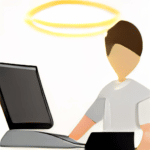Public seminars are a go-to marketing technique for most wellness businesses – yet the results often disappoint. However, marketing wellness or fitness services by giving seminars CAN be an excellent approach. Get it right with these do’s and don’ts (and pay close attention to #11!) .
1. DO give attendees a brochure or other takeaway
You’re selling an intangible service with results that don’t happen overnight. It’s essential that you give attendees something that makes it “real.” The best takeaways help highlight the problems that your business is best at helping them solve.
When we design takeaways for our clients, we design materials that encourage interaction and engagement – for example, a simple refrigerator checklist that helps them tally fruit and vegetable servings for a week, or a self-assessment that helps them take stock of their kids’ activity habits.
2. DO pass around a sign-up sheet for your email newsletter.
Folks forget all about you within a day or two. You’ve got to stay top of mind, so that when they’re ready to move forward they remember your business.
Email’s far and away the best way to do this. Virtually every wellness provider’s marketing plan should include a monthly email newsletter. Facebook and Twitter are not a substitute.
3. DON’T confuse this with a college class
Your first goal is to get their attention by talking about problems or challenges that will resonate with your audience.
Your next goal is to give them hope that those problems can be solved.
Now is not the time to go into all the cardiovascular effects of sustained high blood sugar or the detailed neurochemistry behind clinical depression. Focus on how these issues affect their lives, right now. For example, someone who experiences sustained high blood sugar feels bad – they feel sleepy and lethargic, their muscles are crampy and they’re uncomfortable.
4. DO include real-life customer stories and examples.
These “proof statements” establish credibility and efficacy.
5. DO NOT make a sales pitch
Your goal is to establish yourself as an expert resource. Sharing real-life customer stories is a good way to subtly make the point that you know how to help people.
You’re not selling time-shares. You’re selling health and wellness services. It’s one of the most personal decisions people make, so you need to establish trust, authority and expertise.
And don’t call everyone who attends afterwards to see if they’re ready to buy something. If you call, extend an invitation to your next event or a complimentary consultation, or offer to send them some kind of additional information or resource.
6. DO offer a next step.
It might be downloading a self-assessment, or a white paper, or subscribing to your newsletter. Perhaps it’s a complimentary consultation or an invitation to a free class at your offices or facility.
The point is to make it easy for anyone who’s interested right now to take another step closer to becoming a customer.
A physical handout – for example, a postcard-sized invitation to a free event – is ideal.
7. DON’T present without practicing
Throwing together a presentation at the last minute – without time to rehearse numerous times – is a terrible idea.
8. DO check your body language
Sounds obvious – but it’s a surprisingly common issue. Check your posture and stand up straight. Look attendees in the eye. All the stuff your mom told you to do.
9. DO NOT get on your soapbox
Pretty much everyone gets that obesity’s bad, OK? We don’t need all the statistics yet again. Especially the national stats that have nothing to do with our family or even our city!
It’s safe to assume that people who showed up ALREADY AGREE with you that there’s a problem that needs a solution.
So start talking about solutions right away, rather than rehashing the problem six ways to Sunday. Start painting that picture of what a better life can look like for them.
10. DO put contact info everywhere
Often overlooked – make sure your phone and email are on every page of your presentation. Since your web address is normally part of your email address, leave out your web address in the footer.
And make sure your contact info’s on your brochure and all other handouts and leavebehinds.
11. DO NOT expect to sell anything
Free public seminars are marketing events. They generate future leads and future business. They don’t usually generate instant sales.
They build your email list, so that over time you’re staying top of mind with a larger and larger group of people through your email newsletter and occasional promotions.
Success is when attendees opt in to your email list and leave the session:
- talking about the session to other people
- thinking “Wow, when I’m ready, I would love to go back to these folks.”



